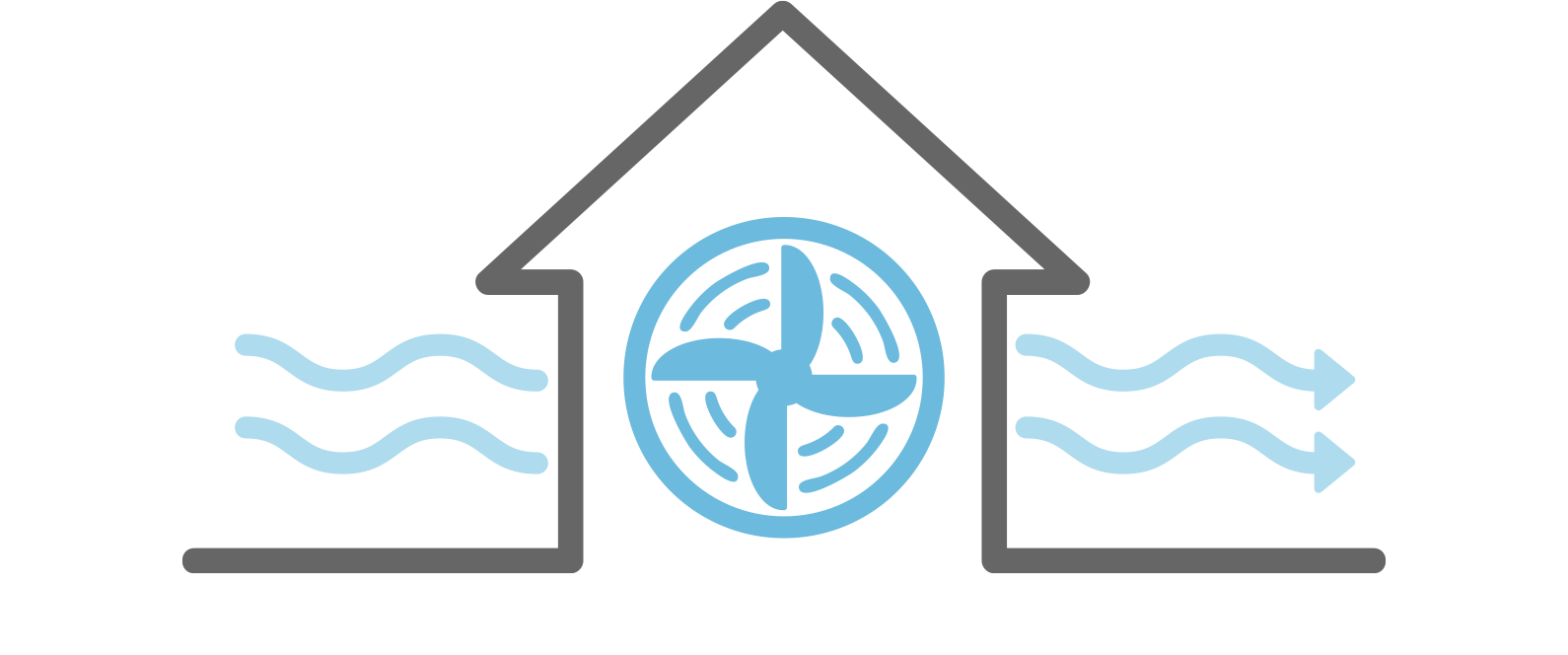Ventilation & COVID-19
 Ventilation can play a critical role in reducing transmissibility of COVID-19 in indoor spaces
Ventilation can play a critical role in reducing transmissibility of COVID-19 in indoor spaces
During COVID-19, indoor spaces are riskier than outdoors. It is more difficult to practice physical distancing in close quarters and to maintain a fresh air supply indoors can be even more challenging. Ventilation, which is the process of circulating fresh air supplied to a closed space to replace stale air, can play a critical role in reducing transmissibility of COVID-19 in indoor spaces.
Impact of ventilation on the transmission of COVID-19
Several considerations must be kept in mind regarding ventilation in indoor spaces:
- Centralized and closed air conditioning systems, sometimes referred to as Heating, Ventilation and Air Conditioning (HVAC), can be used to curb the spread of the virus, providing that the right conditions have been set and the system is regularly maintained. This can be done by ensuring that a trained professional adjusts the HVAC settings to increase the rate at which fresh air substitutes the indoor air. Currently, it is recommended that indoor air should be replaced around 6 times every hour. Recirculation of air should be avoided in crowded spaces but may be acceptable in single occupancy spaces. Regular inspection, maintenance and cleaning of air conditioning systems are vital to reduce the spread of COVID-19.
- Whenever possible, appropriate, high-efficiency air filters such as HEPA (High Efficiency Particulate Air) filters should be installed, especially in public indoor spaces such as in offices, restaurants, schools, or places of worship. This allows for sequestration of the virus.

- It is advisable to avoid the use of table fans, especially in public indoor spaces, as they may facilitate the spread of COVID-19. Table fans can be used in single occupancy spaces. Ceiling fans may be acceptable to use, if the windows are left open to allow for entry of fresh air. However, the feasibility of this strategy also depends on outside environmental conditions (temperature, humidity, presence of pollen or dust, which could trigger asthma attacks, etc).
- Opening doors or windows may be adequate to keep the air circulating. Factors that should be considered include the size of the indoor space, the occupancy rate, and the activities being engaged in within the indoor space. Placing a fan that blows inside air out through the window will greatly enhance air exchange.
- Limiting the number of people within a closed space not only helps with physical distancing, but also allows for more outside air per person. This lowers the risk of COVID-19 spread.
- In order to enhance air exchange in poorly ventilated spaces, portable units with ultraviolet (UV) lights can be used. If this is not possible, then access to the space should be restricted or denied.
- Currently, there is no evidence that the use of small air cleaners/purifiers or houseplants have any impact on the presence of COVID-19 in the air.
Continue to practice safety measures
Regardless of the ventilation precautions, we must continue to practice safety measures to reduce COVID-19 transmission risk:
- Practice physical distancing
- Wear a facemask
- Wash hands frequently with soap and water for at least 20 seconds.

Source: World Health Organization | Environmental Protection Agency | Global Heat Health Information Network | Interview with Dr. Maria Neira, Director of the WHO Department of Environment, Climate Change and Health
Contributors: Dr. Amit Abraham, Dr. Sohaila Cheema, and Dr. Sathyanarayanan Doraiswamy
Editing: Mr. John Hayward